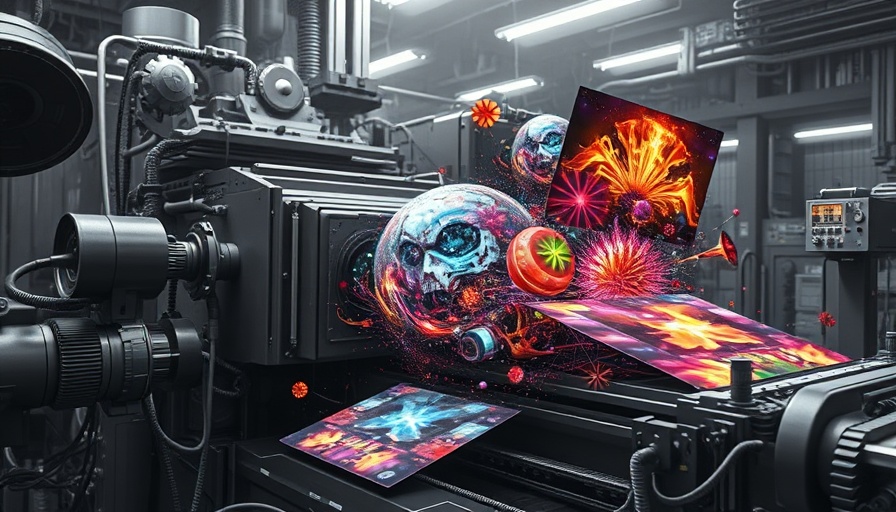
Unlocking Creativity: How AI is Shaping Image Generation
In a world increasingly driven by digital content, the ability to create and manipulate images plays a pivotal role in industries from marketing to entertainment. Black Forest Labs recently made headlines with the launch of its Flux.1 Kontext AI model, which not only generates images but also offers advanced editing features. This dual capability signals a new era in image synthesis that could transform creative workflows.
What Makes Flux.1 Kontext Stand Out?
Unlike traditional text-to-image generators, the Flux.1 Kontext models interpret textual prompts alongside reference images. This innovative approach allows for enhanced in-context generation and editing, fostering photorealistic results and strong prompt adherence. Speed is also a focus; the models operate at speeds up to eight times faster than leading competitors, making them a valuable tool for professionals requiring rapid output.
Competitive Landscape: The Race for AI Supremacy
The release comes amidst fierce competition in the AI-driven image generation space, with notable players such as Google and OpenAI unveiling their models. Just recently, Google launched its Imagen 4 at the I/O developer conference, highlighting the industry's rapid evolution. As these technologies advance, they not only enhance digital creativity but also raise questions about the future of visual content creation.
Democratizing Creativity: Implications for Users
For artists, marketers, and everyday users, the implications of tools like Flux.1 Kontext are significant. Now, anyone with a vision can start tweaking images—changing outfits, scenery, or even text—simply by providing the right prompts. This accessibility could democratize creative production, allowing more people to express their ideas visually without needing extensive design skills.
Future Trends: Where is AI in Image Editing Headed?
As AI continues to evolve, we can expect image generation and editing to become even more sophisticated. Future models will likely integrate more features, including real-time collaboration, improved user interfaces, and greater customization options. As these trends unfold, they will open new doors for industries such as gaming, virtual reality, and e-commerce, further bridging the gap between technology and creativity.
Common Misconceptions Around AI Image Generation
A common myth surrounding AI image generation is that it simply replicates existing images or styles, reducing originality. However, models like Flux.1 Kontext demonstrate that these AI systems can generate unique images based on user inputs, fostering innovation. Understanding this capability can encourage more creative exploration and acceptance of AI as a partner in the design process.
Actionable Insights: Embracing AI for Creative Projects
If you’re considering how to leverage AI tools like Flux.1 Kontext, start by experimenting with simple prompts to see how the AI interprets them. Gradually increase complexity to fully explore the model’s capabilities, whether for personal art projects, marketing materials, or product designs. As you become familiar with the tool, challenge yourself to push beyond conventional ideas and experiment with unexpected prompts.
Conclusion: The Dawn of a New Creative Age
The advancements brought by Black Forest Labs with the Flux.1 Kontext model mark a turning point in the AI-driven creative landscape. As these technologies continue to evolve, they promise to empower users across various sectors, enhancing their capabilities while feeding into the ever-growing demand for visual content. To stay ahead in this rapidly changing environment, embracing and experimenting with these new tools is essential.
 Add Row
Add Row  Add
Add 



Write A Comment